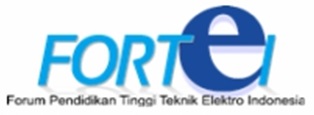Perancangan Aplikasi Transportasi Angkot Berbasis Mobile untuk Penumpang Menggunakan Metode User Centered Design
Sari
Transportasi umum hingga saat ini masih banyak digunakan oleh masyarakat dengan berbagai alasan. Salah satu alasan masyarakat masih menggunakan transportasi umum adalah menghindari kemacetan dan ketidakpraktisan jika menggunakan kendaraan pribadi. Angkot salah satu transportasi umum yang diminati masyarakat terutama masyrakat Indonesia kalangan menengah ke bawah. Angkot sendiri mengalami tantangan dimana pertumbuhan angkutan mulai berkompetisi dengan mode transportasi sharing (ojek online) yang diakses melalui handhpone untuk melakukan pemesanan dan pembayarannya. Penelitian ini mengusulkan sebuah design aplikasi untuk memfasilitasi transportasi umum khususnya angkot untuk menjadi lebih baik lagi. Adanya aplikasi ini dapat mempermudah penumpang dalam mencari angkot sesuai rute tujuan serta membangkitkan kembali gairah masyrakat untuk menggunakan angkot. Metode yang digunakan untuk pengembangan aplikasi ini yaitu user-centered design dan metode yang digunakan untuk melakukan evaluasi perancangan adalah system usability scale (SUS). Hasil evaluasi dari aplikasi diperoleh peningkatkan pengalaman penumpang saat menggunakan transportasi angkot, dimana penumpang dapat lebih mudah mengetahui angkot mana yang harus digunakan untuk sampai tempat tujuan. Selain itu, pada aplikasi ini sudah adanya penetapan tarif yang jelas sesuai dengan kebutuhan pengguna.
Public transportation is still widely used by the community for various reasons. One of the reasons people still use public transportation is to avoid congestion and the impracticality of using private vehicles. Angkot is one of the most popular public transportations, especially the lower middle-class Indonesians. Angkot itself is experiencing challenges where the growth of transportation begins to compete with the sharing mode of transportation (online motorcycle taxis) which is accessed via cell phones to place orders and make payments. This study proposes an application design to facilitate public transportation, especially public transportation, to be even better. The existence of this application can make it easier for passengers to find public transportation according to the destination route and revive the passion of the community to use public transportation. The method used for the development of this application is user-centered design and the method used to evaluate the design is the system usability scale (SUS). The results of the evaluation of the application obtained an increase in the passenger experience when using Angkot transportation, where passengers can more easily find out which Angkot should be used to get to their destination. In addition, this application has a clear tariff setting according to user needs.
Kata Kunci
Teks Lengkap:
PDFDilihat:
Referensi
V. B. Kusnandar, “Jumlah Penduduk Kota Bandung Sebanyak 2,44 juta Jiwa pada 2020,” 1 November 2021. [Online]. Available: https://databoks.katadata.co.id/datapublish/2021/10/01/jumlah-penduduk-kota-bandung-sebanyak-244-juta-jiwa-pada-2020.
D. Dina Fitria Murad, “Development of Smart Public Transportation System in Jakarta City on Integrated IoT Platform,” 2018 International Conference on Information and Communication Technology (ICOIACT), p. 872, 2018.
M. Danuri, “Perkembangan dan Transformasi Teknologi Digital,” INFOKAM nomor II Th. XV/SEPTEMBER/2019, p. 119, 2019.
V. V. Wakari, O. H. A. Rogi dan V. H. Makarau, “Daya Dukung Layanan Angkot Berdasarkan Jarak Jangkauan Masyarakat Terhadap Jalur Trayek di Kota Manado,” Jurnal Spasial Vol 6. No. 3, 2019.
S. Suakanto, E. T. Nuryatno, R. Fauzi, R. Andreswari and V. S. Yosephine, "Conceptual Asset Management framework: A Grounded Theory Perspective," 2021 International Conference Advancement in Data Science, E-learning and Information Systems (ICADEIS), 2021, pp. 1-7, doi: 10.1109/ICADEIS52521.2021.9701948.
S. Suakanto, “Perancangan dan Implementasi Sistem Informasi Penumpang,” Prosiding SNFA (Seminar Nasional Fisika dan Aplikasinya), 2017.
T. Lowdermilk, User-Centered Design, Sebastopol : O'Reilly Media, Inc., 2013.
Sagala, L. D., Fauzi, R., & Syahrina, A. (2020). Perancangan User Interface Pada Aplikasi Informasi Berbasis Website Untuk Tindakan Perbaikan Layanan Angkutan Umum Di Kota Bandung Menggunakan Metode User Centered Design. eProceedings of Engineering, 7(2).
Bogren, L., Fallman, D., & Henje, C. (2009, April). User-centered inclusive design: Making public transport accessible. In Proceedings of the International Conference on Inclusive Design–Royal College of Art, London, UK (pp. 5-8).
Hörold, S., Mayas, C., & Krömker, H. (2015). Interactive Displays in Public Transport – Challenges and Expectations. Procedia Manufacturing, 3, 2808–2815. doi:10.1016/j.promfg.2015.07.932
A. R. Risbaya, “Perancangan User Interface dan User Experience Aplikasi Lintas Bandung Berbasis Mobile Android Untuk Tindakan Perbaikan Angkutan Umum Di Kota Bandung Menggunakan Metode User Centered Design,” Universitas Telkom, Bandung, 2020.
Rekrut, M., Tröger, J., Alexandersson, J., Bieber, D., & Schwarz, K. (2018). Is Co-creation Superior to User Centred Design? Preliminary Results from User Interface Design for Inclusive Public Transport. Lecture Notes in Computer Science, 355–365. doi:10.1007/978-3-319-92034-4_27
Quinapallo Vallejo, O. S. (2020). Design of the user interface and user experience of an application for hiring transportation services in real time (Doctoral dissertation, ETSI_Informatica).
S. Rinaldi, A. Gandhi and N. Selviandro, "Usability Evaluation and Recommendation of User Interface Design for e-HAC Application by Using User-Centered Design Method," 2022 24th International Conference on Advanced Communication Technology (ICACT), 2022, pp. 483-490, doi: 10.23919/ICACT53585.2022.9728887.
Fröhlich, P., Millonig, A., Frison, A.-K., Trösterer, S., & Baldauf, M. (2018). User Interfaces for Public Transport Vehicles. Proceedings of the 10th International Conference on Automotive User Interfaces and Interactive Vehicular Applications - AutomotiveUI ’18. doi:10.1145/3239092.3239101
Ekşioğlu, M. (2016). User Experience Design of a Prototype Kiosk: A Case for the İstanbul Public Transportation System. International Journal of Human–Computer Interaction, 1–12. doi:10.1080/10447318.2016.1199179
Hochmair, Hartwig H. "Effective user interface design in route planners for cyclists and public transportation users: An empirical analysis of route selection criteria." Transportation Research Board-87th Annual Meeting, Washington, DC Transportation Research Board of the National Academies. 2008.
J. Nielsen, “Why You Only Need to Test with 5 Users,” 18 Maret 2000. [Online]. Available: https://www.nngroup.com/articles/why-you-only-need-to-test-with-5-users/.
DOI: https://doi.org/10.15575/telka.v8n2.138-148
Refbacks
- Saat ini tidak ada refbacks.
Jurnal TELKA terindex oleh :







Didukung oleh :


Ciptaan disebarluaskan di bawah Lisensi Creative Commons Atribusi-NonKomersial-BerbagiSerupa 4.0 Internasional.



